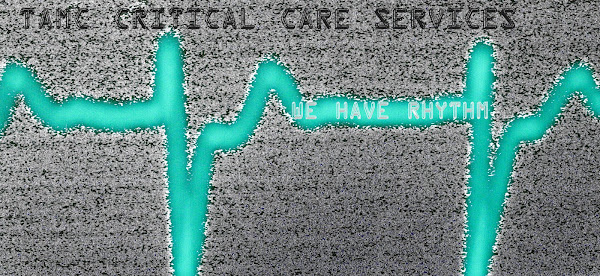Pain, Potty and Position-the new motto...
Bob Murphy raised this as a way to raise our patient satisfaction at Spring Fever the past couple days. So along that vein, Here is an article to support this expectation.
I know we are all about making the patient's stay a better one while making our jobs a pleasant experience at the same time. This article with research discusses the stress "bellringers" place and how hourly rounding can decrease patient and caregiver stress.
http://www.medscape.com/viewarticle/570242
This is a focus for our areas this year-increasing patient satisfaction through hourly rounding will affect our Avatar patient satisfaction scores if we remember to round on our patients and remind them that they may receive a survey in the mail after discharge that we use to make us better and that we rely on their responses to do just that, judge what we are doing well and improve on our weak areas.
Tracy
Sunday, February 24, 2008
API starts today :)
Of course those of you at work are aware of this. Try to remember to clock/badge in and out using special codes for incentive/reward shifts as well as charge if they apply. I'm sure there will be lots of questions as things come up-please don't hesitate to ask questions. Please continue to do your paper timecard until we tell you to stop; this will just help us to double check your badged time against what you really worked in case the codes weren't entered at the time you badged.
Take a deep breath and remember It usually takes a long time to find a shorter way.
Be patient we will get there together.
Tracy
Take a deep breath and remember It usually takes a long time to find a shorter way.
Be patient we will get there together.
Tracy
Saturday, February 23, 2008
Heart Failure Reading-Core Measures
We are deep in Heart Failure season so thought it was appropriate to review some things to meet the Core measures that affect our repayment on Heart Failure admissions.
Here are some reading links for you....
http://www.nursingcenter.com/library/JournalArticle.asp?Article_ID=741530
http://www.jointcommission.org/PerformanceMeasurement/PerformanceMeasurement/Heart+Failure+Core+Measure+Set.htm
You all have been doing well with reminding caregivers and education of patients but a little review never hurts to keep us all current!
Kudos to Otie for someone out of our department noticing what we all see each day you work-Norman Roy mentioned that even though she was busy one day she took the time to review a patients needs with him. Again something we do each day but feels good to know that we are valued for our knowledge of our patients.
Dr. Hanf also recognized Wanda's efforts with a difficult end of life situation and managed her up to the family as well as to Rosalie Dwyer which went a long way to making the death experience for the family as much of a positive experience as could be expected.
Nice job Ladies!
Have a nice weekend!
Tracy
Here are some reading links for you....
http://www.nursingcenter.com/library/JournalArticle.asp?Article_ID=741530
http://www.jointcommission.org/PerformanceMeasurement/PerformanceMeasurement/Heart+Failure+Core+Measure+Set.htm
You all have been doing well with reminding caregivers and education of patients but a little review never hurts to keep us all current!
Kudos to Otie for someone out of our department noticing what we all see each day you work-Norman Roy mentioned that even though she was busy one day she took the time to review a patients needs with him. Again something we do each day but feels good to know that we are valued for our knowledge of our patients.
Dr. Hanf also recognized Wanda's efforts with a difficult end of life situation and managed her up to the family as well as to Rosalie Dwyer which went a long way to making the death experience for the family as much of a positive experience as could be expected.
Nice job Ladies!
Have a nice weekend!
Tracy
Thursday, February 21, 2008
EKG Quiz for RN's
Alrighty so here is the first competency for this year. Print off and complete for this years competency. It's not as hard as it looks. Drumroll please...
EKG Quiz
1. You’re caring for a patient with a history of mitral valve prolapse(MVP). Based on your knowledge of the heart’s anatomy, you know the mitral valve is located between the :
a. the left atrium and left ventricle
b. the left ventricle and the right ventricle
c. the right atrium and the right ventricle
d. the right ventricule and the pulmonary artery
2. A 45 year old patient is admitted to your floor for observation after undergoing cardiac catherization. His test results reveal a blockage in the circumflex artery, which supplies oxygenated blood to which area of the heart?
a. anterior wall
b. lateral wall
c. inferior wall
d. septal wall
3. Which of the following choices is responsible for slowing heart rate?
a. norepinephrine
b. vagus nerve
c. epinephrine
d. isoproterenol
4. A 65 year old patient diagnosed with angina is admitted to your telemetry unit. You begin cardiac monitoring and record a rhythm strip. Using the 8-step method of rhythm strip interpretation what should you do first?
a. Calculate the heart rate
b. Evaluate the P wave
c. Check the rhythm
d. Measure the PR interval
5. A 76 year old patient with heart failure is receiving furosemide(lasix) 40mg IV twice daily. When you look at her rhythm strip, you note prominent U waves. Which condition may have caused the U waves to appear on your patient’s rhythm?
a. hypokalemia
b. hypocalcemia
c. worsening heart failure
d. pericarditis
6. A patient with a history of paroxysmal atrial tachycardia {PAT} develops digoxin toxicity, which may cause prolongation of the PR interval, so you must monitor his cardiac rhythm closely. What’s the duration of a normal PR interval?
a. 0.06 to 0.10 second
b. 0.12 to 0.20 second
c. 0.24 to 0.30 second
d. 0.36 to 0.44 second
7. A patient is admitted to your telemetry unit with a diagnosis of sick sinus syndrome. Which medication should you keep readily available to treat symptomatic bradycardia?
a. isoproterenol( Isuprel)
b. verapamil (Calan)
c. lidocaine
d. atropine
source:ECG Interpretation made Incredibly Easy! Lippincott Williams & Wilkins, 2005there are many quick quizzes like this available @ http://www.nursing2007.com/ (click the educators button)
By popular demand the answers are as follows:
1-A 2-B 3-B 4-C 5-A 6-B 7-D {added on 3mar08}
EKG Quiz
1. You’re caring for a patient with a history of mitral valve prolapse(MVP). Based on your knowledge of the heart’s anatomy, you know the mitral valve is located between the :
a. the left atrium and left ventricle
b. the left ventricle and the right ventricle
c. the right atrium and the right ventricle
d. the right ventricule and the pulmonary artery
2. A 45 year old patient is admitted to your floor for observation after undergoing cardiac catherization. His test results reveal a blockage in the circumflex artery, which supplies oxygenated blood to which area of the heart?
a. anterior wall
b. lateral wall
c. inferior wall
d. septal wall
3. Which of the following choices is responsible for slowing heart rate?
a. norepinephrine
b. vagus nerve
c. epinephrine
d. isoproterenol
4. A 65 year old patient diagnosed with angina is admitted to your telemetry unit. You begin cardiac monitoring and record a rhythm strip. Using the 8-step method of rhythm strip interpretation what should you do first?
a. Calculate the heart rate
b. Evaluate the P wave
c. Check the rhythm
d. Measure the PR interval
5. A 76 year old patient with heart failure is receiving furosemide(lasix) 40mg IV twice daily. When you look at her rhythm strip, you note prominent U waves. Which condition may have caused the U waves to appear on your patient’s rhythm?
a. hypokalemia
b. hypocalcemia
c. worsening heart failure
d. pericarditis
6. A patient with a history of paroxysmal atrial tachycardia {PAT} develops digoxin toxicity, which may cause prolongation of the PR interval, so you must monitor his cardiac rhythm closely. What’s the duration of a normal PR interval?
a. 0.06 to 0.10 second
b. 0.12 to 0.20 second
c. 0.24 to 0.30 second
d. 0.36 to 0.44 second
7. A patient is admitted to your telemetry unit with a diagnosis of sick sinus syndrome. Which medication should you keep readily available to treat symptomatic bradycardia?
a. isoproterenol( Isuprel)
b. verapamil (Calan)
c. lidocaine
d. atropine
source:ECG Interpretation made Incredibly Easy! Lippincott Williams & Wilkins, 2005there are many quick quizzes like this available @ http://www.nursing2007.com/ (click the educators button)
By popular demand the answers are as follows:
1-A 2-B 3-B 4-C 5-A 6-B 7-D {added on 3mar08}
Welcome All !!!
Here you go-a blog just for us....I'll try to keep this as THE source for updates.
The first post is dedicated to API-hey we all like to get paid right? Vilma and I will be learning the system as you are. If you think you have forgotten to badge/clock in or out for a shift we will be able to help the process. Sunday February 24th is our first day to badge. We have some of your badges and are distributing them as we see you-you have to turn in our old badge with the cover to receive the new one.
Please let me know what kinds of things you want to see here and I will oblige as much as I can :)
Until the next time,
Tracy
The first post is dedicated to API-hey we all like to get paid right? Vilma and I will be learning the system as you are. If you think you have forgotten to badge/clock in or out for a shift we will be able to help the process. Sunday February 24th is our first day to badge. We have some of your badges and are distributing them as we see you-you have to turn in our old badge with the cover to receive the new one.
Please let me know what kinds of things you want to see here and I will oblige as much as I can :)
Until the next time,
Tracy
Subscribe to:
Comments (Atom)

